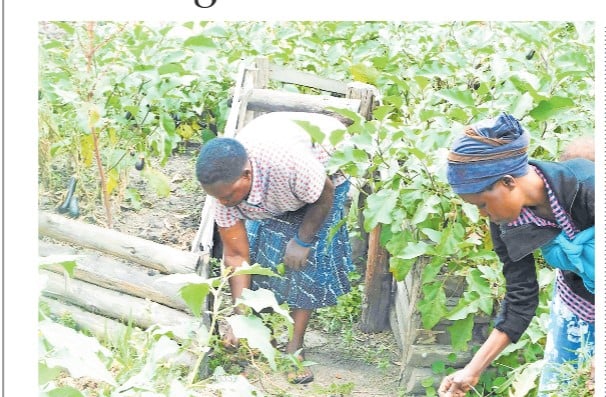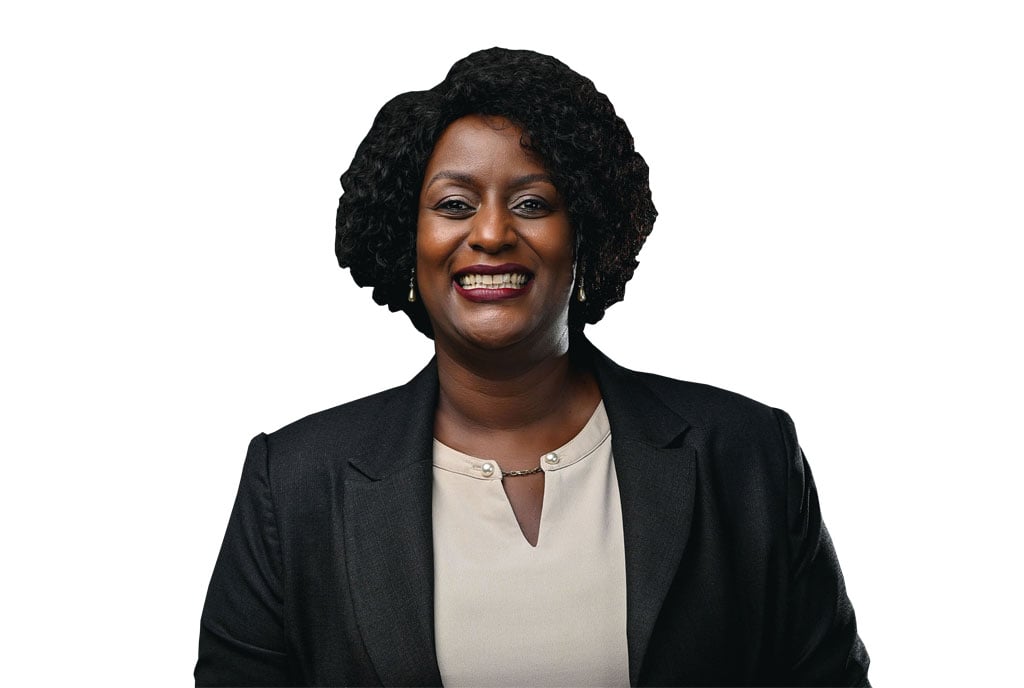Prime
What exactly is Kabaka’s land?

Anyone on the kingdom managed land has to get a lease title, which uniquely has an automatic renewal clause. /PHOTO/Eric Dominic Bukenya
What you need to know:
“Kyaapa oba Ttaka lya’Kabaka” This is a popular question that land buyers in Buganda region usually ask before making any transaction. There is fear by many to acquire land assumed to be Kabaka’s because of the pros and cons involved, especially the cons
Nathan Muwonge, a land broker in Kabuuma - Wakiso District off Salaama road, recalls the day his client declined to pay for a plot of land worth Shs28 million in Kabuuma.
Muwonge notes that the reason was because the client had been told that the land he was buying was one of those managed by the Buganda Land Board (BLB), which is deemed as Kabaka’s land.
He notes that the client was not pleased with the narrative that he would never own a freehold title on the said plot of land.
Just like Muwonge, Jefas Mutooro a land broker in Luweero Town Council, reveals that land in Luweero that is managed by Buganda Land Board (BLB) is hard to transact since most buyers choose to stay away from it.
Cultural activist and former Member of Buganda Lukiiko Ssewava Sserubiri Siraje notes that the Kabaka is the custodian of the kingdom’s land on behalf the people of Buganda.
He adds that land as an asset is important to existence of the kingdom, which makes it impossible for anyone to own a freehold title on the kingdom-managed land.
Ssewava, however, reveals that the Kabaka as a Ugandan Citizen has a right to own land in a private capacity.
He says there is the official Kabaka land also known as Kabaka’s lusuku, which accounts for 350 Sq. Miles situated in various parts of the kingdom. It is meant for any person who assumes the throne as Kabaka.
Ssewava notes that this land is entrusted with a department known as Enkuluze, though the responsibility was transferred to BLB by the kingdom administrators.
Legally, all land attached to Buganda Kingdom is managed by BLB, a professional body that was set up by the Kabaka to manage land and property returned to Buganda Kingdom under the Restitution of Assets and Properties Act of 1993.
According to Denis Bugaya, the spokesperson of the BLB, on top of the 350 square miles known as the Kabaka’s lusuku, BLB further manages land that was returned during the memorandum of understanding between the central government and the Kabaka of Buganda in 2013.
“The 2013 agreement returned all kingdom land that houses counties and sub-counties, all official land for the office of the Katikkiro, Ssaabalamuzi, Namasole (Kabaka’s mother) and Omuwanika. They also returned land found in urban centres,” Bugaya notes.
“When you agregate all that land, BLB manages close to 1,000 square miles.”
Bugaya says that given the fact that Buganda Kingdom measures approximately 19,000 square miles, the land managed by BLB makes a very small proportion of all land in Buganda but some people want to create an impression that Buganda land is the source of land challenges, which is not true,” he says.
Bugaya explains that most of the land returned in 2013 had spent more than 40 years in government hands and Uganda Land Commission and District Land Boards had parcelled out most of it as freehold titles. This has created challenges because legally a freehold title cannot be issued on mailo land.
“We have asked whoever acquired freehold titles on this land to contact us at our various offices spread across the kingdom and we amicably agree on a way forward,’ he says.

All people with bibanja on Kabaka’s land have a legal mandate to pay annual nominal ground rent.
/PHOTO/Eric Dominic Bukenya
To buy or not to
Ssewava notes that by the time the colonial protectorate government left Uganda, some land leased by the protectorate government had expired leases and it had to automatically go back to Buganda Kingdom.
Ssewava notes that at a time when Buganda is in talks to reclaim what they owned, it is not advisable for anyone to acquire such land.
However, he advises that for anyone to transact land in Buganda, one has to do a background check and in case the land has any attachment with the Kingdom, then transactions have to involve Buganda Land Board which is legally authorised to issue the titles, popularly dubbed Kyaapa Mu Ngalo.
But Bugaya says all land titles are issued by government, through the Ministry of Lands. BLB just facilitates the process of title acquisition.
“Some people think we have a printer for titles. That is not true. We provide the right information to the government offices and they provide the title,” he says.
Buganda and land today
Isaac Mpanga, who is also a renowned lawyer and a member of Buganda Lukiiko, notes that each office in Buganda Kingdom setting has land assigned to it. Such offices include the Kabaka, Katikiro, Omuwanika, Namasole, and Ssabalamuzi, among others.
He says in the current dispensation, all land managed by Buganda Kingdom is barely called Kabaka’s land.
“The said land is within various parts of Uganda, say Luweero Town Council land that is meant for office of the Muwanika but managed by BLB,” Mpanga adds.
He, however, reveals that as of today, BLB manages all the land attached to the kingdom. Mpanga emphasises that as per Buganda Kingdom’s official policy, the kingdom does not offer freehold titles on land that is managed by the kingdom.
“People lack information and they peddle lies that one can’t acquire land on land managed by Buganda Kingdom. The issue is about the tenure system and kingdom’s policy. The issue is that no one can buy a mailo title from Kabaka or BLB,” he notes.
Mpanga reveals that anyone on the Kingdom managed land has to get a lease title, which uniquely has an automatic renewal clause. Buganda leases range from 49 to 99 years, depending on the wish of the applicant.
He notes that Buganda does not sell land in freehold.
Mpanga also adds that all those with interests in acquiring Kibanja (plots) on Buganda Kingdom managed land must double check with the regional BLB office or show willingness to register after presenting the sales agreement.
Status of occupancy
Much as the official position of occupancy on the kingdom land rules out mailo or freehold titling, the system of leasehold and Kibanja (Customary Certificate of Occupancy) have conditions that one must put into consideration.
According to Ssewava, Busuulu (ground rent) is the most popular among all and it involves rent payable by a tenant on Kabaka’s land as provided by the law.
Mpanga reveals that the amendment to Article 31 of the Land Act provides that a tenant must pay annual ground rent to the property owner as determined by district land boards.
According to Bugaya, all people with bibanja on Kabaka’s land have a legal mandate to pay annual nominal ground rent as determined by the minister of Lands or District Land Boards.
“Some districts such as Luweero and Masaka set their own busuulu rates but the rest pay according to the rates set by government,” he says.
The official Busuulu rates set by government are; a kibanja holder in a city has to pay Shs50,000, municipalities Shs40,000, town councils Shs30,000, town boards Shs20,000 and villages Shs5,000 per year.
However, Bugaya says that prior to Busuulu payment, the Kibanja holder is advised to register with BLB at a small fee. According to information on the BLB website, one pays Shs1,600,000 to cater for registration and survey of the kibanja.
Bugaya, however, clarifies that survey and title acquisition is optional.
For lease, BLB seeks an applicant to obtain and fill in Lease Application Forms from any of the BLB branch offices, produce copies of authentic documents that indicate ownership of the piece of land. In case of a company, submit a copy of the Articles and Memorandum of Association plus a certificate of registration.
According to BLB’s official website, the lease offer is only given to the applicant clearly showing the duration of the lease, premium and ground rent to be paid and the premium payable is dependent on size, location and capital value of the said land.
Types of Land Tenure Systems
Isaac Mpanga explains that there are several types of land tenure Systems in Uganda. Under these, citizens and non-citizen can own or buy land for a specific purpose.
“Land can either be owned in perpetuity or for a given period of time. The Land Act (1998) identifies the four forms of land tenure systems in Uganda which include customary, leasehold, freehold and mailo, grants all legitimate and bona fide occupants property rights; establishes land tribunals and decentralises land administration,” he explains
This implies that the tenure systems under which someone can own land in Uganda include Mailo Land, Freehold land, leasehold, customary land and public land.
He however notes that all systems are applicable in Buganda though the kingdom’s land falls under mailo land tenure system where ownership of land is privately held in perpetuity with no limited period.
Ugandans, organisations, can only own mailo land or companies whose majority shares or stake are by Ugandans. A title deed is issued for mailo land ownership.
Mpanga notes that it is under such tenure systems under which land can be acquired, owned, utilised and disposed of. “If you do not belong to any of the systems of tenure, you do not own land in Uganda. However, you can only be defined as a tenant on a property, a squatter or bona-fide occupant as the law may determine based on circumstances of occupancy,” he adds.
The History
Before the 1900 agreement, land in Buganda belonged to everyone within Buganda but governed by specific traditional office holders.
In his book The Mailo system in Buganda, Henry W. West, who was assistant commissioner for lands and surveys in the early 1960s explains that the basic unit of the mailo system is a square mile, hence the derivation of mailo, which is also equivalent to 640 acres.
West notes that the term is used in Uganda to describe a land tenure system that came into effect when the kingdom of Buganda signed an agreement with the British administered Uganda Protectorate there in 1900.




